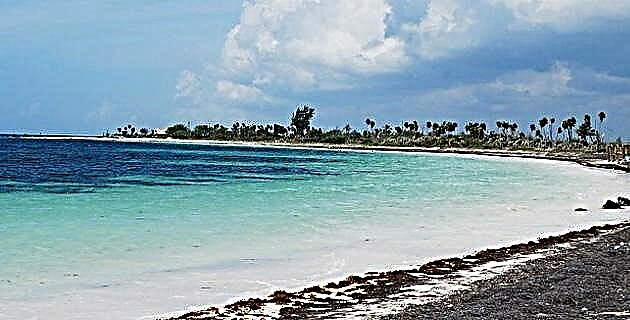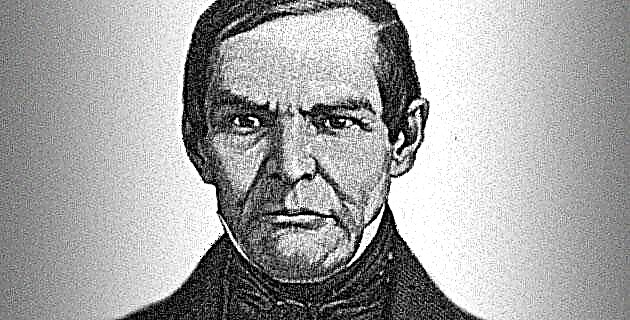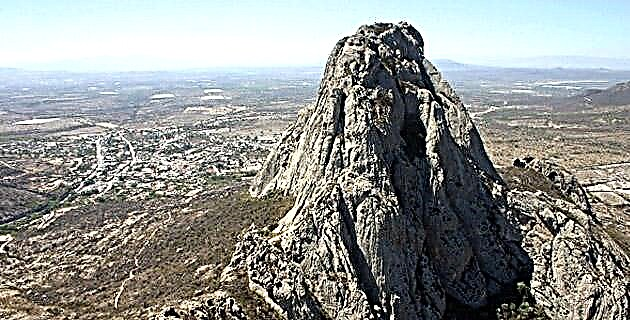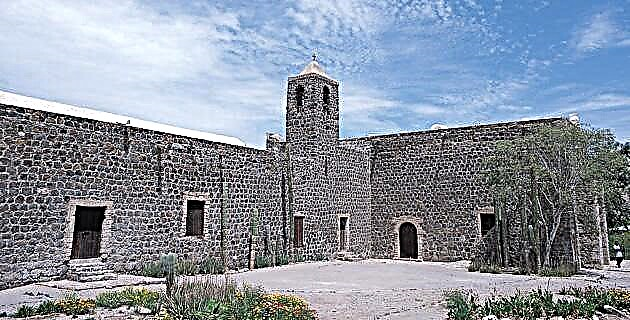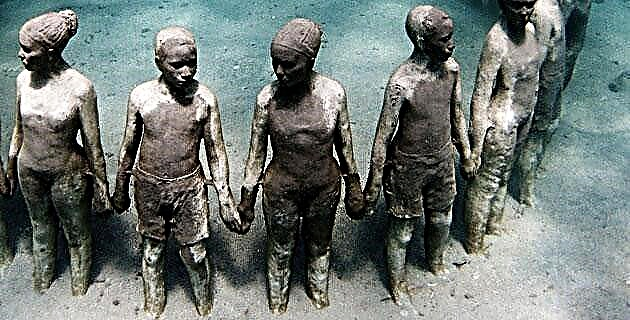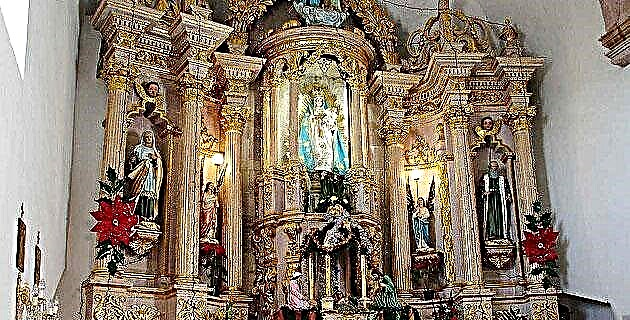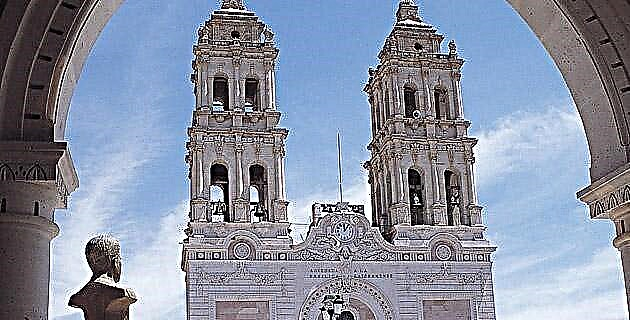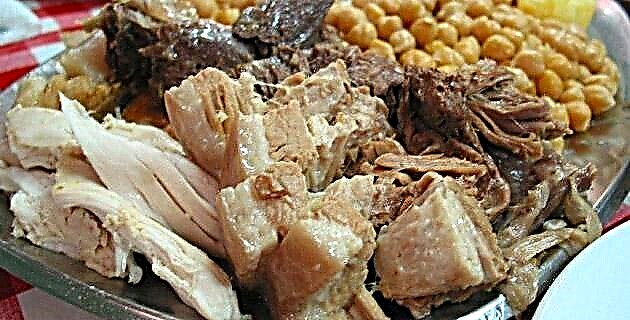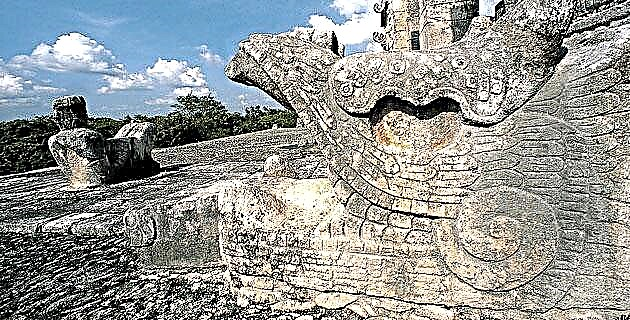
I left Mayapán in one day 2 Ahau 13 Chen towards “the mouth of the well of the Itzáes”, where I would arrive in three days. As I traveled, I worriedly thought about the adventure that awaited me.
The Batab of the Caan lineage had commissioned me to go to Chichén Itzá and see what their city was like, and if it was true that the gods manifested there when the stars showed their luminosity.
To remain inconspicuous, I had to join a group of regatones who went to buy products in the great metropolis, where luxury items were concentrated. He was dressed like a polom: his body painted black, a spear in his hand, a bundle of cloth on his back, and cotton clothes. The language took my calm; Although the people of Chichén spoke Mayan like me, the Itzáes had another way of expressing themselves, and it was they who ruled in that capital. Faced with my constant questions about the language, the merchants repeated some words commonly used in business dealings, but my trip had another purpose ...
Sometimes I found serenity, especially when we stopped to burn copal to the north star, Xaman Ek, or when we worshiped the god of merchants, Ek Chuah.
We entered the city at dusk and immediately took a white road, a sacbé, which led us to an important merchant area. After walking through various paths, discreetly observing everywhere, we stopped in front of a residence with vaulted rooms. With a sumptuous façade, decorated with Chaac masks and geometric shapes that looked like snakes, the building was a safe haven where we would leave our bundles. The rooms were spacious, with columns or pillars as interior support and semi-open porticoes. The impression of sacredness began when I entered the lodge, because all the walls that surrounded me were stuccoed and painted with figures of feathered serpents, jaguars walking or sitting, beings that were a combination of man-eagle-snake-jaguar, carriers of the sky, trees full of animals. But there were also narrative scenes of wars and sacrifices.
The room that surrounded me showed the energy of the superhuman forces and the strength of the human forces of Chichén Itzá. It was true: he was in a powerful place where gods and men exchanged their vitality. I had to keep all this in memory to describe it to my lord.
Now I should find a way to separate myself from the group and penetrate the religious center of the city. To do this, I convinced a P'entacob, a service man who guarded the place, of my fervor for the gods and my promises to pray and shed blood in the most sacred sites of Chichen Itza. I would have to dress like him to pass as a person who purged a fault with services and to separate myself from the group of merchants, only for short periods so that my absence would not be noticed.
After two moons I decided to walk, at sunset, towards the north, with my heart beating because I was going to meet the gods. About five hundred mecates [linear measurement used by the Mayan Indians and equivalent to approximately 20 meters] away I came across a wide square and I was locating each of the buildings, according to what some merchants and my guide had told me. I immediately experienced the presence of the gods. This scene of sacred forces invited meditation and prayer.
Illuminated by the evening star, I looked at a complex of buildings (nowadays called Las Monjas) where - it is said - sorceresses who took part in certain rites lived. On a large basement with rounded corners, with a wide staircase with smooth limits, there is a set of rooms with facades to the north, facing the square, and with another doorway to the south, all of them decorated with stone mosaics carved in fretwork shapes. , as well as columns and small drums. It has an annex whose profuse decoration emphatically marks the presence of the god of rain, but in this repeated presence is included a ruler with a plume and surrounded by feathers, elements that accentuate his function as an intermediary between men and the gods. The facade is also a large open mouth of the serpentine monster through which the leaders entered to receive the gifts that allowed them to exercise power.
The energies of Chaac seem to be concentrated in The Church, as forces of the celestial environment, because the four bacabes are present, which are those that support the vault of heaven in the four corners of the world, the four houses of the Sun.
Walking north I came to a singular round building supported by two long platforms of wide stairways guarded by feathered serpents that faced west. Seated there is a drum-shaped building surmounted by curved walls, with little windows, like a tower. They say that only the astronomer priests enter the building and ascend to the top by a spiral staircase (that's why people refer to this building as El Caracol). I have been informed that through the entrance of the main facade the solar forces are shown, as shadows, during the solstices and equinoxes. Through the little windows of the tower appeared the Venusian god Kukulcán, when Venus was observed as the evening star; thus, the building was aligned to measure astral times.
From the astronomical observatory, heading northwest, I went to a Casa Colorada, dedicated, it is said, to the husband of the goddess Ixchel, Chichanchob.
Retracing my steps, moved by everything I had seen and recalling the shapes, decorations and senses of the buildings, I had to talk with my guide again and ask him to go even further into the sacred spaces of the city.
Other moons passed until, once again, the favorable moment arrived to circulate through the sacred centers. When the divine forces presented themselves to me, I entered a place surrounded by walls. Fearful of being affected by the emanations of the forces of death, but prepared with the appropriate rites, I entered what the townspeople call El Osario, where the fleshless bones of the ancestors are buried. The main construction of this group of buildings is a stepped platform of seven bodies, with a temple at the top that marks a place of divine essences: a cave. The transit to this mouth of the underworld was marked by a vertical shaft lined with carved stones.
Refugee in the residence where I was staying, I was waiting for the most important date in the ritual calendar of Chichén Itzá: the feast of Kukulcán. And finally the moment arrived: the spring equinox, when the god makes himself present to the population. I prepared myself with fasts and purifications to worship the god and take part in the public ritual, which would be attended by all the inhabitants of the city and many more from the neighboring places. First, I made a solemn pilgrimage through a sacbé that communicated El Osario with the great plaza of the Kukulcán temple, in the middle of which there was a wall that I had to cross. Accessing the religious heart of Chichén Itzá required a religious preparation of fasts, abstinences and prayers. Joining a procession of young people I walked solemnly, for this sacred path was carefully constructed, resembling the white path of heaven, that is, the Milky Way. As I crossed the arch of the wall, I perceived the divine forces with intensity, in the wide open space of the square, delimited by the Temple of the Warriors and the Thousand Columns to the east and the Ball Court to the west. The extensive sacred space was interrupted in the central part by the monumentality of the Kukulcán pyramid, resembling an axis of the world, with four facades that indicate the four directions of the universe. Just as the world and its extremes figure, it also represents time, because adding the steps of the facades and the base of the temple results in the number 365, duration of the solar cycle. With its nine levels, it was a monument to the nine regions of the underworld where Kukulcán lay, as a principle of life. So what he was looking at was the monument to the place where the creation had taken place. The intensity of this feeling disturbed me, but trying to open my eyes and my heart to the events, with devout recollection I was observing the transit of the Sun after its arrival at the highest point, and when it began to set, its rays of light were They reflected on the edges of the staircase, generating a series of triangular shadows that produce the illusion of a serpent slowly descending from the pyramid as the Sun declines. This is how the god manifests himself to his faithful.
As time went by, the square was becoming vacant, so I looked for a place to hide to go to see other buildings. I stayed until dawn, leaning between two corners of a wall of skulls. Before the sun rose, several men appeared, silently and carefully cleaning the sacred space. When they were close to me, I pretended to be doing the same, and after circling a platform of eagles and tigers devouring hearts, I went to the Ball Court, which bordered the western part of the Kukulcán temple plaza. I began to walk through it, entering the side of the attached Temple that faces east. It was truly a colossal building. The court consisted of two wide courtyards at the ends and a narrower and longer one in the center, closed by walls and buildings at both ends, and demarcated along the length by extensive platforms of vertical walls that rise from sidewalks with sloping faces. Copiously decorated, all its reliefs indicated the religious meaning of this ritual. Symbolically, the ball court is a scene of the sky where the celestial bodies move, particularly the Sun, the Moon and Venus. In the walls of the upper part of the narrow courtyard there were two rings through which the ball should pass, which were carved with intertwined serpents, these indicated the threshold of the passage to the underworld. I admired in the reliefs of the bench the procession of two groups of warriors-ball players that were unfolding at the sides of a center, represented by a ball in the shape of a human skull. The parade of the Kukulcán warriors was headed by the body of a slain, from which emerged six snakes and a flowering branch, interpreting blood as a fertilizing element of nature. On the other side of the ball is the sacrificer who presides over another row of warrior-players; apparently, these are the victorious and those the defeated. This scene seems to represent human wars, as a version of cosmic struggles, that is, the dynamics of the natural and human world due to the confrontation of opposites.
Trying not to be discovered, I walked along the wall to the east, to travel another sacred path. Joining some pilgrims who had come to see the apotheosis of Kukulcán, I tried to reach the other vital heart of the city: "the mouth of the Itzáes well." Complying with the seasons marked by the ritual, I walked surrounded by intense green. When I reached the mouth of the cenote I was absorbed by its distinctive beauty: it is the widest that I have seen so far, also the deepest and the one with the most vertical walls that I know. All the pilgrims began to show offerings and to throw them: jades, gold, wooden objects such as spears, idols and weaving instruments, ceramic pots filled with incense and many things of value. I learned that in certain ceremonies children offered themselves, so that with their crying, by sympathetic magic, they would attract the rain, for that reason it was the precise place to worship Chaac.
I withdrew with prayers to the god of rain, thanking him for the goodness of allowing me to be in a place of such high sacredness. Returning to the great square, in its northern part I beheld another monumental construction, preceded by pillars that supported a vaulted hall. These pillars confirmed my concept of the inhabitants of Chichén Itzá as a people of conquering warriors who took warlike confrontations as a way to duplicate the cosmic dynamics and maintain universal harmony. As I left the site I was able to admire the Pyramid of the Warriors, with its ascending steps, which in its vertical part had slabs with masked human figures and jaguars, eagles and coyotes in an attitude of eating human hearts. A little further away I observed the magnificent temple with a portico. The entrance is preceded by two huge snakes with their heads on the ground, their bodies vertical and the rattlesnake holding the beam of the clearing, magnificent representations of Kukulcán.
In the evening I met with the merchants who were already preparing the trip back to Mayapan. He was convinced that Chichén Itzá was the sacred city par excellence, dominated by the cult of Kukulcán as the conqueror, inspirer of a warrior spirit in the city, and as a god, synthesis of quetzal and rattlesnake, breath of life, principle of generation and cultural creator.
Source: Passages of History No. 6 Quetzalcóatl and his time / November 2002


